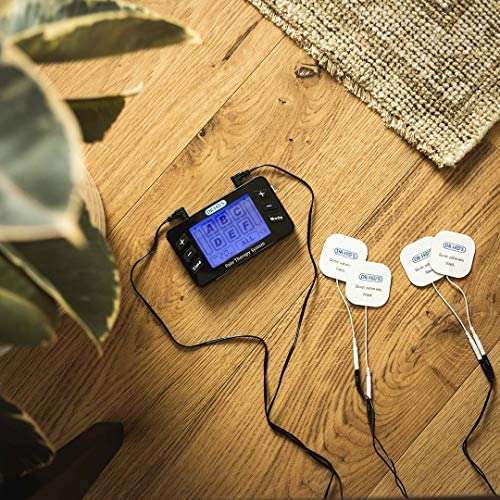Eye Movement Desensitization and Reprocessing (EMDR) is a therapy designed to ease physiological distress that results from traumatic experiences. EMDR therapists specialize in administering EMDR treatments to patients suffering from mental anguish and facilitate healing. If you are a licensed mental health clinician and are considering becoming an EMDR therapist, you may wonder what you need to do to get certified.
Licensed mental health clinicians interested in becoming an EMDR therapist should follow these three steps:
- Complete EMDR coursework.
- Conduct 50 clinical sessions using EMDR.
- Engage in 20 hours of EMDR consultation with an approved EMDR consultant.
These are the three basic steps that need to be completed to become a licensed EMDR therapist. To better understand what an EMDR therapist does and background information on what exactly you need to do to become an EMDR therapist, keep reading.
EMDR (Eye Movement Desensitization and Reprocessing) is a psychotherapy that enables people to heal from the symptoms and emotional distress that are the result of disturbing life experiences. Repeated studies show that by using EMDR therapy people can experience the benefits of psychotherapy that once took years to make a difference. It is widely assumed that severe emotional pain requires a long time to heal. EMDR therapy shows that the mind can in fact heal from psychological trauma much as the body recovers from physical trauma. When you cut your hand, your body works to close the wound. If a foreign object or repeated injury irritates the wound, it festers and causes pain. Once the block is removed, healing resumes. EMDR therapy demonstrates that a similar sequence of events occurs with mental processes. The brain’s information processing system naturally moves toward mental health. If the system is blocked or imbalanced by the impact of a disturbing event, the emotional wound festers and can cause intense suffering. Once the block is removed, healing resumes. Using the detailed protocols and procedures learned in EMDR therapy training sessions, clinicians help clients activate their natural healing processes.
More than 30 positive controlled outcome studies have been done on EMDR therapy. Some of the studies show that 84%-90% of single-trauma victims no longer have post-traumatic stress disorder after only three 90-minute sessions. Another study, funded by the HMO Kaiser Permanente, found that 100% of the single-trauma victims and 77% of multiple trauma victims no longer were diagnosed with PTSD after only six 50-minute sessions. In another study, 77% of combat veterans were free of PTSD in 12 sessions. There has been so much research on EMDR therapy that it is now recognized as an effective form of treatment for trauma and other disturbing experiences by organizations such as the American Psychiatric Association, the World Health Organization and the Department of Defense. Given the worldwide recognition as an effective treatment of trauma, you can easily see how EMDR therapy would be effective in treating the “everyday” memories that are the reason people have low self-esteem, feelings of powerlessness, and all the myriad problems that bring them in for therapy. Over 100,000 clinicians throughout the world use the therapy. Millions of people have been treated successfully over the past 33 years.
EMDR therapy is an eight-phase treatment. Eye movements (or other bilateral stimulation) are used during one part of the session. After the clinician has determined which memory to target first, he asks the client to hold different aspects of that event or thought in mind and to use his eyes to track the therapist’s hand as it moves back and forth across the client’s field of vision. As this happens, for reasons believed by a Harvard researcher to be connected with the biological mechanisms involved in Rapid Eye Movement (REM) sleep, internal associations arise and the clients begin to process the memory and disturbing feelings. In successful EMDR therapy, the meaning of painful events is transformed on an emotional level. For instance, a rape victim shifts from feeling horror and self-disgust to holding the firm belief that, “I survived it and I am strong.” Unlike talk therapy, the insights clients gain in EMDR therapy result not so much from clinician interpretation, but from the client’s own accelerated intellectual and emotional processes. The net effect is that clients conclude EMDR therapy feeling empowered by the very experiences that once debased them. Their wounds have not just closed, they have transformed. As a natural outcome of the EMDR therapeutic process, the clients’ thoughts, feelings and behavior are all robust indicators of emotional health and resolution—all without speaking in detail or doing homework used in other therapies.
Have you been struggling recently to recover from situational or childhood trauma? Or, do you continually find yourself in an anxious or depressive state? EMDR therapy is a common treatment for individuals who have gone through such experiences and more. In fact, it has been considered one of the most effective treatments for individuals with PTSD.
Thanks to its popularity, EMDR treatment has grown incredibly popular over the years. One of the benefits of this type of therapy is the fact that the client does not necessarily need to speak directly about the trauma with the therapist often in order to see results and improvements.
One of the most common questions individuals ask when looking into EMDR treatments has to do with how much it costs. Luckily, here at AlphaMind Brain Centers, we offer EMDR to our patients and are happy to answer all of your questions. Keep reading to find out approximately how much this treatment option will cost you.
What is EMDR Therapy?
EMDR stands for Eye Movement Desensitization and Reprocessing. It originally came about back in the late 1980’s, so it has been around for almost forty years. Since then, the therapeutic technique has been extensively researched, with findings showing just how effective it is – even the World Health Organization has recognized it.
But what exactly happens during EMDR therapy? During your session, eye movement is combined with other types of stimuli. This may include light, sounds, or taps. This stimulus helps the brain process the memories or the traumatic experience while the client focuses on the memory. This is referred to as bilateral stimulation, which is when the stimulus occurs in a rhythmic right-left pattern. Through this, the client is able to work through the trauma until it no longer brings up unwanted emotions or sensations for them.
According the American Psychological Association, there are eight phases in EMDR therapy:
-
Phase 1: History-taking
-
Phase 2: Preparing the client
-
Phase 3: Assessing the target memory
-
Phases 4-7: Processing the memory to adaptive resolution
-
Phase 8: Evaluating the treatment results
The amount of sessions needed to process a trauma differs from person to person. Most individuals will achieve the goals they set out to achieve in 8-12 sessions, which is a significantly shorter time frame than those in regular talk therapy.
Benefits
Roughly 60% of men and more than 50% of women have struggled to heal from at least one trauma they experience in their lives – that is millions of Americans. Luckily, EMDR has been able to help so many people process their traumas and move forward in a better headspace. Some of the conditions that EMDR therapy is able to assist include:
-
PTSD
-
Anxiety
-
Depression
-
Substance use disorders
-
Bipolar
These are just some of the conditions that can benefit greatly from EMDR treatments, along with multiple types of trauma. Not only is the time frame for treatment shorter than traditional talk therapy, clients may actually start feeling relief in as little as three sessions. This treatment also does not require individuals to speak about their trauma as detailed as they would in traditional therapies, so they do not have to experience extended exposure to the trauma. This is exceptionally helpful for individuals who struggle the most to discuss the trauma itself.
If you are interested in an effective treatment that allows you to work through your trauma in a shorter time frame without needing to speak in detail about what happened, EMDR therapy may be beneficial for you.
Average Cost of EMDR Therapy
The cost of EMDR therapy will vary depending on the provider, amount of sessions, and length of the sessions. EMDR treatments require therapists to have more specialized training than therapists providing traditional psychotherapy treatments. Therefore, this can make EMDR a bit more pricey than traditional treatment.
The average cost of EMDR therapy ranges on average from $150 – $200 for a 60-minute session. With that said, this type of treatment is considered to be the most cost-effective treatment for individuals suffering with PTSD. Sessions will also differ in length depending on your treatment plan. Some individuals may need sessions longer than one hour, while others won’t even need to take an entire hour for each session.
Thanks to how effective the treatment is, EMDR is typically covered by most private insurance companies. This means that you can potentially save hundreds on your cost of treatment. Contact us here at AlphaMind Brain Centers to see if your insurance covers EMDR therapy with us!
Contact AlphaMind Brain Centers Today
If you have been looking for EMDR treatment near the Cary, North Carolina area, reach out to AlphaMind Brain Centers! We are able to answer any and all of your questions regarding this treatment, as well as getting your first session set up. We understand how difficult of a decision it can be to take the first step, and we are here to make the setup process as easy as possible for you. Contact us today by filling out the form below or give us a call at your earliest convenience. We hope to hear from you soon!




